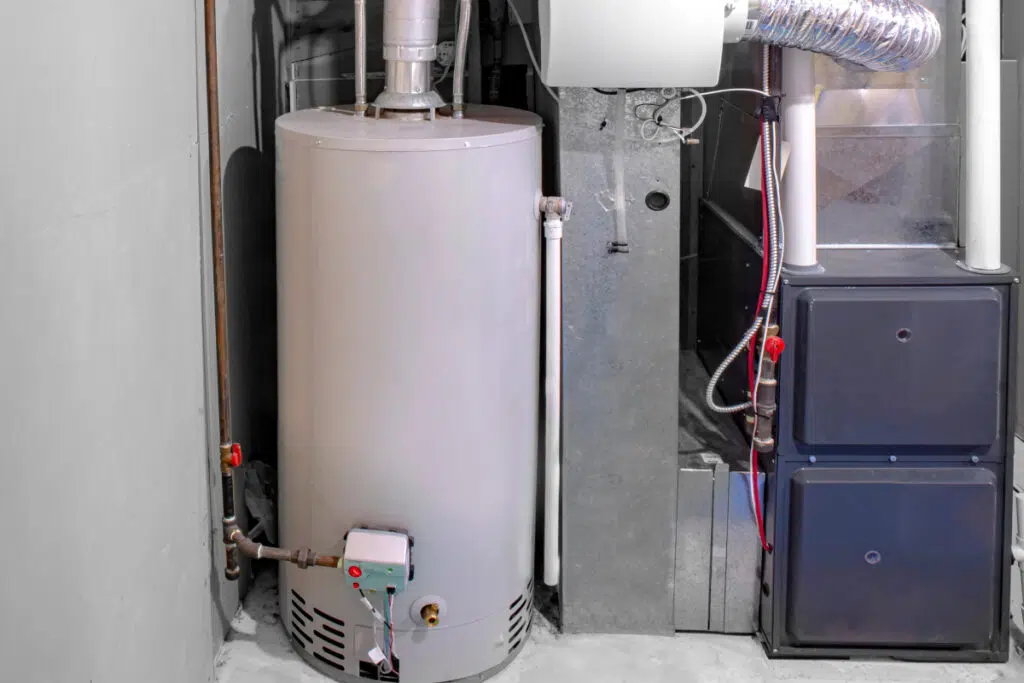Heating and cooling emergencies happen when you least expect them. The experts at C.B. Lucas will assess and handle any emergency HVAC or plumbing issues in your home or business. We have the necessary skills and tools to fix your system so you can safely use it once again. Call C.B. Lucas to get 24/7 emergency HVAC & plumbing services in Northern Virginia and the surrounding areas.
How To Flush Your Water Heater
Maintenance Tips & Tricks
 Many of us take hot water for granted — until our water heater stops working. No hot water can make showering or washing dishes a pain, and getting the water heater repair or replacement you need might take time.
Many of us take hot water for granted — until our water heater stops working. No hot water can make showering or washing dishes a pain, and getting the water heater repair or replacement you need might take time.
How do you avoid these headaches? Stay on top of essential water heater maintenance by flushing your water heater regularly.
In this blog, the plumbing experts at C.B. Lucas offer tips and tricks for DIY water heater cleaning. Remember, if you want to get all of your maintenance done promptly by a professional, you can always turn to us.
Why Do Water Heaters Need To Be Flushed?
Mineral buildup in your water heater can keep it from running as efficiently as it should, which you may notice if your water takes longer to heat up or if your water heater is struggling to work consistently. If ignored, excess sediment can even cause long-term damage to your unit.
Flushing the water heater prevents this sediment from building up. Keep reading to learn how often you should flush your water heater and how to do it yourself.
How To Flush a Water Heater in 7 Steps
- Turn off the unit: Before you do anything, turn off your water heater. For gas units, set the thermostat to OFF. If your unit is electric, shut off power from the electrical panel or fuse box.
- Turn off the cold water supply: There will be a valve at the top of the tank where the water supply pipe connects to the unit. Turn this valve to the OFF position. Ideally, you can allow the water to cool overnight before moving on to the next step, but that’s not required.
- Connect the drain valve to a garden hose: First, check your water heater manual for accurate valve size specifications. You may need a connector to attach a hose to the valve. Place the other end of the hose wherever you want the water to drain (outside or into a tub or utility sink — anywhere below the height of the drain valve).
- Run water through a faucet in your home: Turn on a sink or tub faucet and leave it on throughout this process. This step will relieve pressure and prevent a vacuum inside the water line. The faucet must be located higher than the top of the water heater.
- Open the drain valve to allow the tank to drain: This step can take a while, depending on how full your tank is or how much sediment is in there. Every 10 to 15 minutes, drain the water into a bucket. This will make it easy to see the sediment leaving your tank.
- Flush the tank: Turn the cold water supply back on and let it run until clear water comes out of the garden hose. This flush will remove any sediment particles in the tank. Then, turn the cold water supply off again.
- Allow the tank to refill: Close the drain valve, remove the hose, and turn the water supply back on. The tank will start to refill. It’s important to keep the faucet running during this process – when it’s running at full pressure, the tank is full and you can turn it off. Turn your water heater back on.
Note that if you have a gas water heater, you will have to turn the thermostat to “Pilot,” if you have an electric water heater, you’ll want to turn the power back on at the electrical panel or fuse box.
How Often Should I Clean My Water Heater?
You should clean your water heater once a year as part of annual water heater maintenance. If you have hard water – which is common in the Northern Virginia area – then you may need to flush your water heater more often, typically every four to six months. This is the best way to avoid excess sediment buildup in your unit. Staying on top of this process can extend the life of your water heater and prevent unnecessary repairs.
When To Call a Professional Plumber
While it is possible to flush your water heater yourself, it’s recommended that you enlist the help of a professional in some cases. If you’re not confident about draining the unit properly or worried about safety issues like burning yourself on scalding water or flooding your home, skip the DIY process.
It’s also important to remember that flushing your water heater is one of many steps in water heater maintenance. When you call a professional plumber to clean your unit, they can complete the other steps necessary for an annual water heater maintenance service.
At C.B. Lucas, we offer comprehensive water heater maintenance services for traditional and tankless water heaters. Our licensed experts can efficiently flush your unit and run any other necessary diagnostic checks to ensure your water heater works the way it should.
Contact us today to schedule water heater maintenance service in Fairfax or Prince William County.
As spring approaches and the chill of winter fades, it’s the perfect time to shift your attention to your home’s cooling system. With a few...

